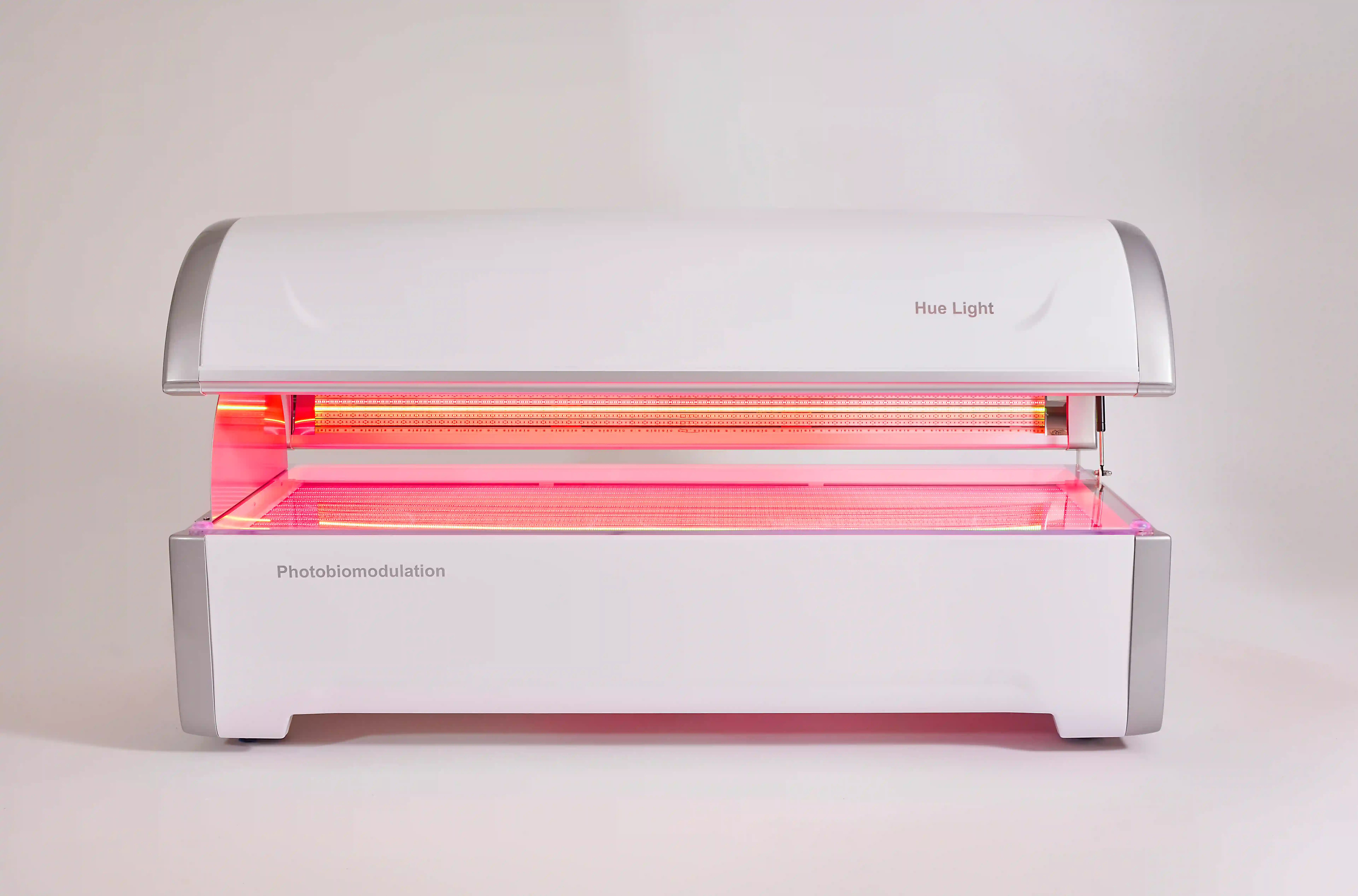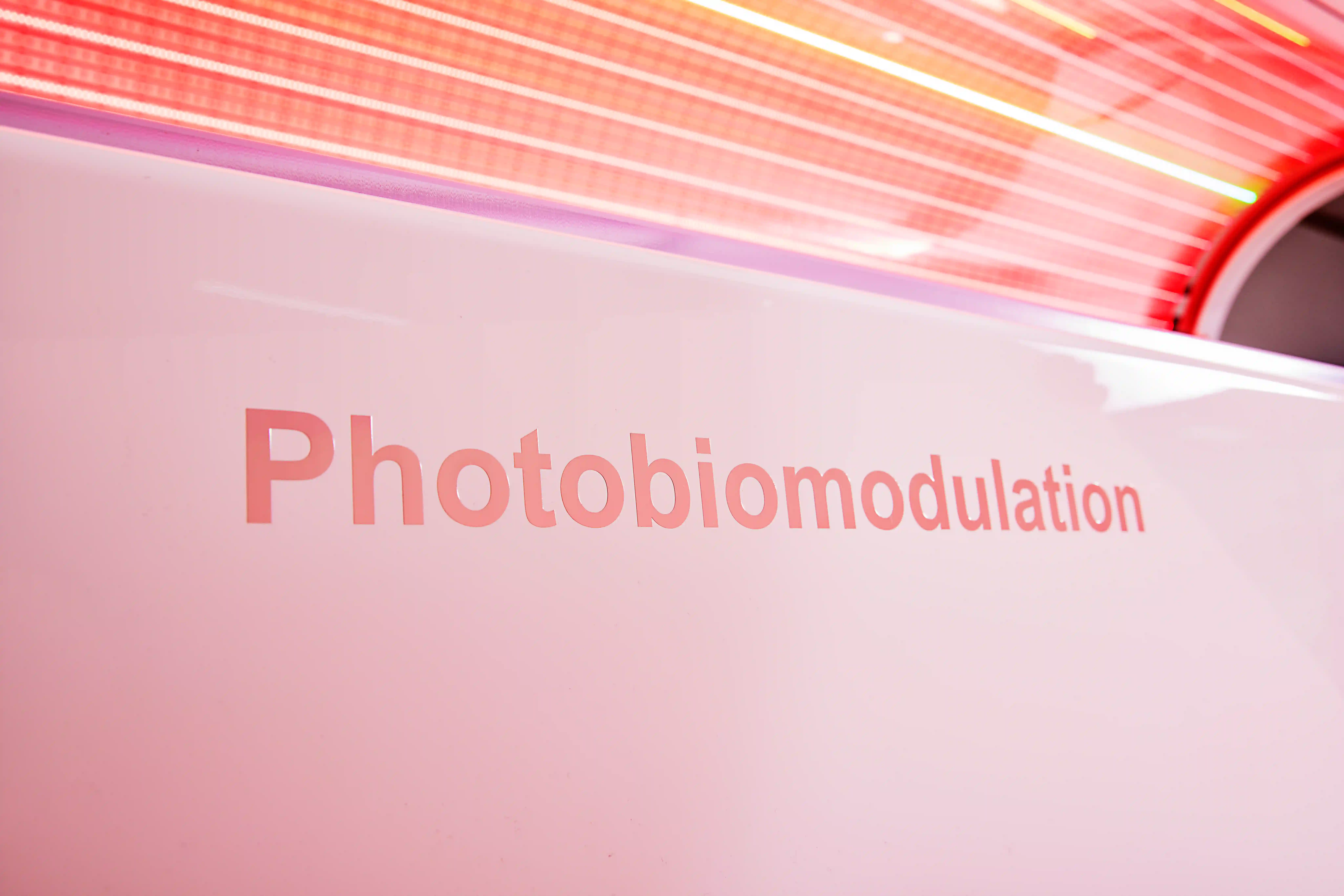Can help patients with complex condition, pain-sensitivity, sports injuries and more.
Highly Versatile
Medical-Grade Devices
FDA, ISO, CE , IEC cleared. Proven by exceptional clinical research (level 1 studies)
Quick & Convenient
Easy to administer 10 – 30 minute treatment with fantastic results.
A full range of science-backed wavelengths to rejuvenate and revitalize.
Embrace the power of full spectrum LED light therapy including red light, near-infrared, infrared, and green with Hue Light’s Whole-Body Photobiomodulation Chamber. Our FDA-registered photobiomodulation bed transcends traditional red light therapy, offering a full spectrum of light wavelengths for individualized care.
Tailor sessions with the latest light therapy technology: green, red, NIR and IR wavelengths; continuous and selective frequency modes; premium, color-precise LEDs; and professional power. Designed for professional or at-home use, the Hue Light PBM bed delivers a truly medical-grade light therapy experience.
- 4 spectrums of light – Wide range of light wavelengths: green (530nm), red (660nm), near-infrared (850nm), and infrared (940nm).
- Medical-grade power – Equipped with 38,880 medical diodes with adjustable irradiance outputs of 34 mW/cm2-100 mW/cm2.
- Selective or combined frequency modes – Choose from 8 different modes, including frequency cycling utilizing all 7 Nogier Frequencies based on the individual’s needs.
Optimize Your Health with Light Therapy
Red light therapy provides even full-body coverage. Some immediate benefits of light therapy includes:

Increased Blood Circulation

Relaxed Muscles

Elevated Body Temperature

Stiffness Relief
Product Specifications and Basic Features
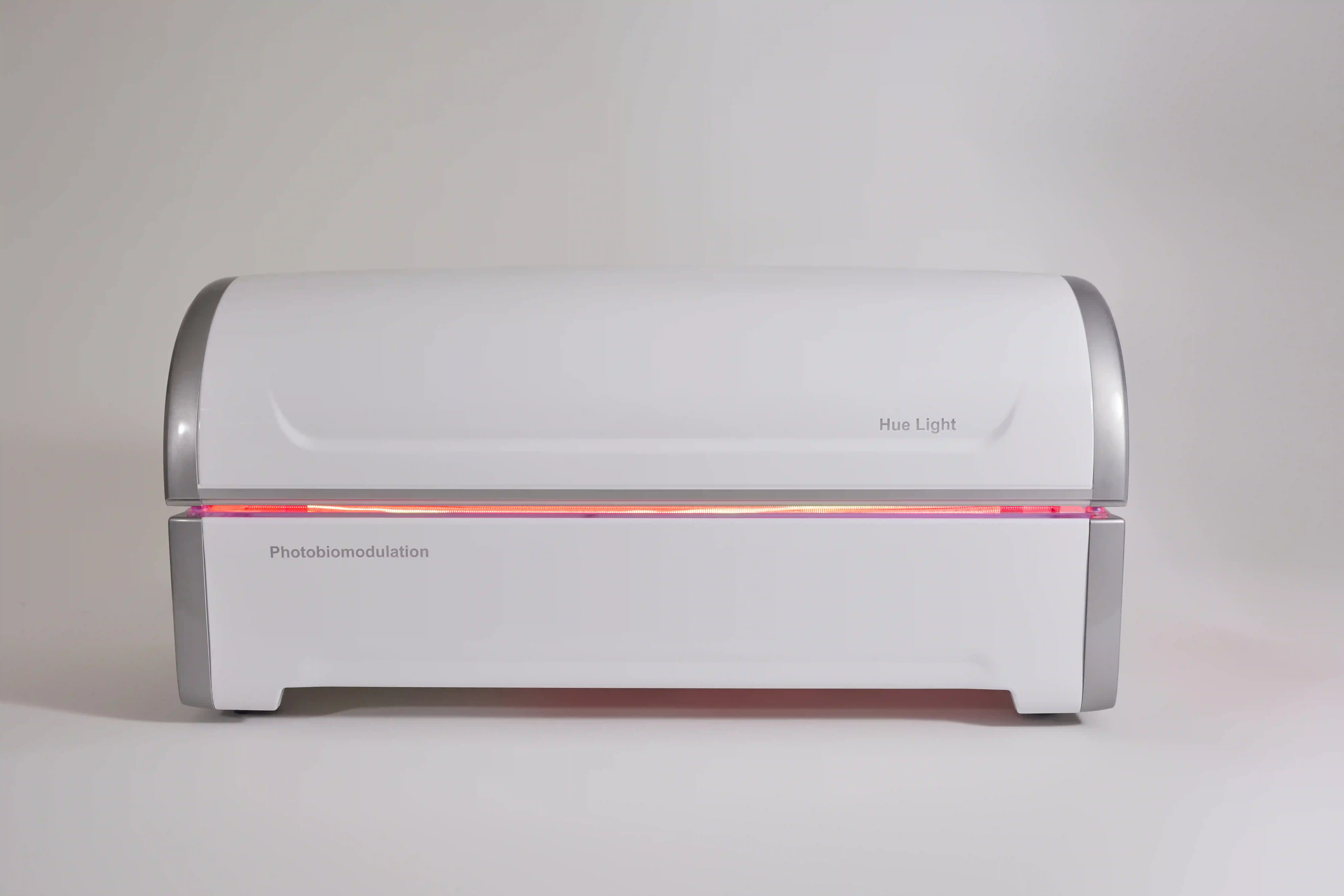
| Product Name |
Whole-Body PBM (Photobiomodulation) Treatment Machine [Patent Granted] |
| Dimensions, Weight |
Chamber: 2910 × 840 × 1060 mm (L×W×H), 220kg Control Unit: 554 × 400 × 1100 mm (L×W×H), 17kg Total Weight: 237kg |
| Specifications, Technology |
Light Source: 40,000+ chips, 3D proximity irradiation Feature: Cellular resistance prevention Control: External control & smartphone app Power: 4,000W Treatment Time: 20 min/session |
| Rated Voltage and Power Consumption | 220–230V AC, 50/60Hz, 3.9kW |
| Manufacturer | Huelight (Made in Korea) |
Trusted in 20+ Countries, Including the U.S. Europe, and the Middle East
Used in: Cancer Treatment Centers, Rehabilitation Hospitals, Neurological Hospitals (including Parkinson’s care), Pain Management Clinics, Cancer Nursing Facilities, and more.

Cancer Center(USA)
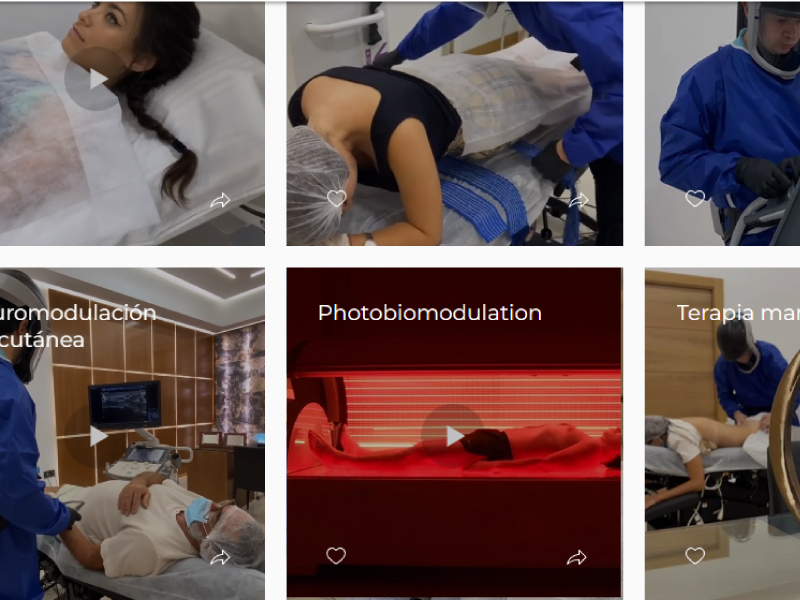
Rehabilitation medicine hospital in Madrid, Spain
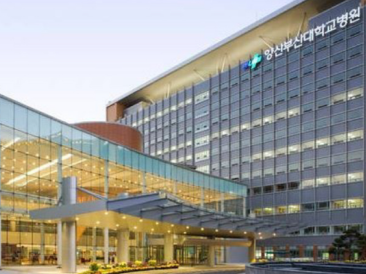
Pusan National University Yangsan Hospital
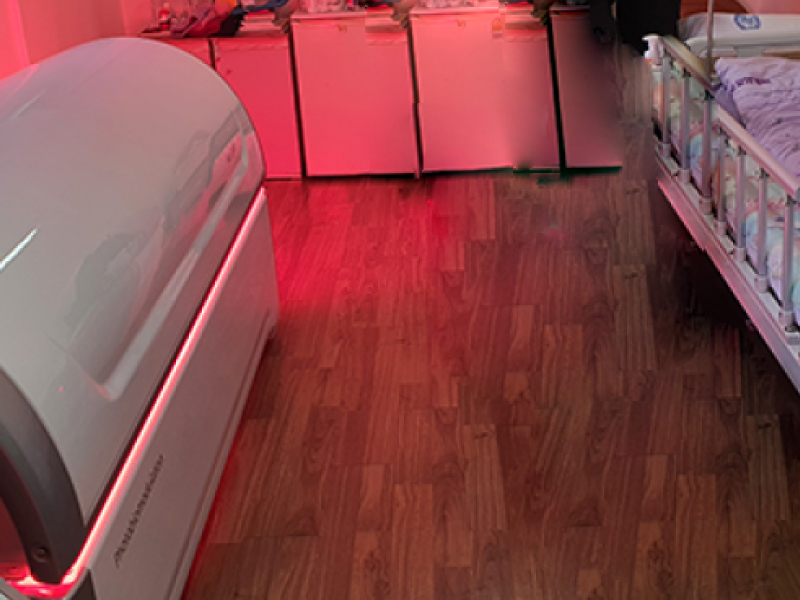
Parkinson’s disease treatment specialty hospital
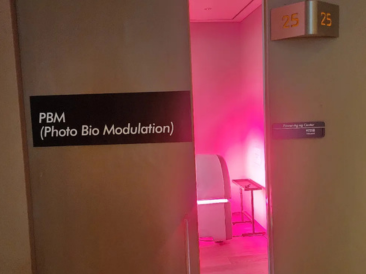
Chaum Hospital (Gangnam)
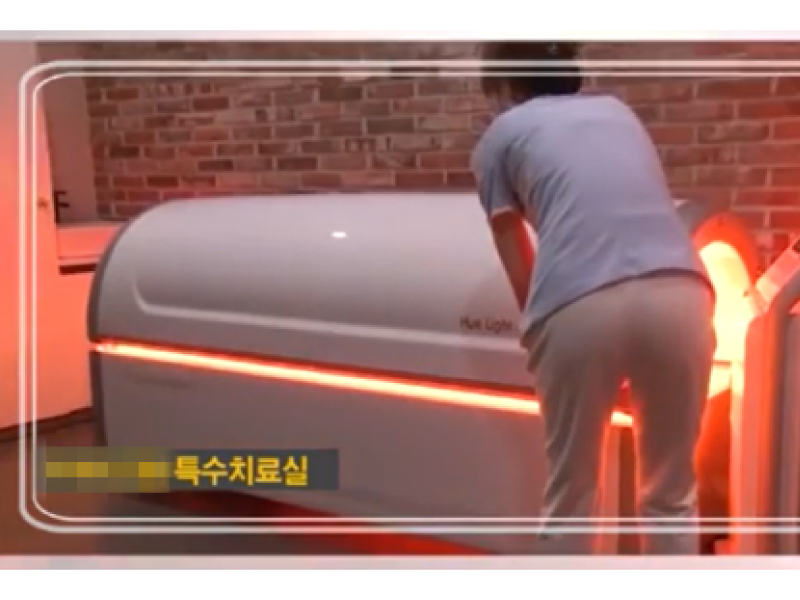
OOO Nursing Hospital
FAQs
Photobiomodulation (PBM) therapy uses specific wavelengths of light from low-level lasers or LEDs to stimulate biological processes at the cellular level. This light penetrates the skin and reaches the mitochondria, the powerhouse of the cell, where it triggers biochemical changes that enhance healing and recovery.
Here’s how it works:
1) Boosting Mitochondrial Function One of PBM’s primary effects is on cytochrome c oxidase, an enzyme in the mitochondria that plays a key role in the production of ATP (adenosine triphosphate)—the body’s main energy source.
By absorbing light energy, mitochondria become more efficient at generating ATP, giving cells the energy they need to repair and regenerate tissues.
2) Reducing Oxidative Stress
Oxidative stress occurs when there’s an imbalance between free radicals and antioxidants in the body, leading to inflammation and tissue damage.
PBM therapy enhances the activity of antioxidant enzymes, helping to neutralize reactive oxygen species (ROS) and protect cells from damage.
This, in turn, reduces inflammation and promotes tissue repair.
3) Improving Blood Flow and Oxygen Delivery
PBM therapy stimulates microcirculation, increasing blood flow to damaged tissues. This helps deliver oxygen and essential nutrients while clearing out waste products, accelerating the healing process.
This effect is particularly beneficial for injuries, wounds, and post-surgical recovery.
4) Modulating the Inflammatory Response
PBM has an anti-inflammatory effect, helping to regulate the body’s immune response. It reduces the production of pro-inflammatory cytokines while increasing anti-inflammatory cytokines, which helps control swelling, minimize tissue damage, and relieve pain.
5) Stimulating Cell Growth and Tissue Repair
PBM therapy promotes cell proliferation and regeneration, aiding in the healing of skin, muscle, and nerve tissues. It’s widely used for wound healing, muscle recovery, and nerve regeneration, making it an effective treatment for conditions like diabetic ulcers, musculoskeletal injuries, and neuropathic pain.
6) Relieving Pain
PBM therapy helps reduce pain by: decreasing inflammation, enhancing blood circulation, protecting nerve function, and reducing pain signal transmission in nerve fibers.
PBM leverages the body’s natural healing mechanisms to accelerate tissue regeneration. It is a non-invasive treatment with minimal side effects that is being used in various medical fields.
Yes, it is. The full-body PBM device is classified as a Class II medical device by both the Korean Ministry of Food and Drug Safety and the U.S. Food and Drug Administration (FDA). It has also been registered as a medical device in several other countries.
Full-body Photobiomodulation (PBM) therapy is currently being studied for its potential to alleviate symptoms and slow the progression of Parkinson’s disease. PBM therapy works by delivering specific wavelengths of light to tissues, stimulating cellular energy production, reducing inflammation, and supporting neuronal health. Since Parkinson’s disease is caused by the degeneration of dopamine-producing neurons, PBM may play a role in promoting neural cell survival and functional recovery. Animal studies and early clinical trials suggest that PBM therapy may reduce neuroinflammation, improve motor symptoms, and enhance quality of life for Parkinson’s patients. However, it is not yet considered a standard treatment, and larger-scale clinical trials are still needed. PBM therapy can be used alongside existing Parkinson’s treatments, and ongoing research worldwide—including mid-sized clinical trials in university hospitals in South Korea—continues to explore its long-term safety and efficacy.
Full-body Photobiomodulation (PBM) therapy has been studied for its potential to alleviate side effects associated with cancer treatments such as chemotherapy and radiation therapy. These treatments can cause fatigue, oral mucositis, skin damage, inflammation, pain, and immune suppression, and research suggests that PBM therapy may help mitigate these effects.
Key Benefits of PBM Therapy for Cancer Patients:
1. Reducing Fatigue
- Cancer-related fatigue is a major challenge for many patients. PBM therapy may increase cellular energy production (ATP synthesis) and support overall body recovery, helping patients feel more energized.
2. Easing Oral Mucositis
- Chemotherapy and radiation can cause severe oral mucositis (painful inflammation and ulceration in the mouth). PBM therapy has been shown to reduce inflammation and pain, promote tissue healing, and improve quality of life for patients with this condition.
3. Healing Skin and Mucosal Damage
- Radiation therapy can damage the skin and mucous membranes. PBM therapy accelerates tissue regeneration, reduces inflammation, and alleviates discomfort, promoting faster recovery of damaged skin and mucosal tissues.
4. Relieving Pain and Inflammation
- PBM therapy has anti-inflammatory properties that may help reduce pain and discomfort caused by cancer treatments. It can also provide neuroprotective effects, which may help prevent or alleviate chemotherapy-induced nerve damage.
5. Boosting Immune Function
- Cancer treatments often weaken the immune system. PBM therapy may support immune cell activity and regulate inflammation, potentially enhancing immune function and helping patients recover more effectively.
PBM therapy is non-invasive, safe, and well-tolerated by most patients, making it a promising supportive treatment for cancer therapy side effects. However, it should be used under medical supervision, and patients should consult with their oncology team to develop a personalized treatment plan before incorporating PBM therapy into their care regimen.
References:
- Zadik Y, et al. Systematic review of photobiomodulation for the management of oral mucositis in cancer patients. Supportive Care in Cancer, 2014.
- Hamblin MR. Mechanisms and applications of the anti-inflammatory effects of photobiomodulation. AIMS Biophysics, 2019.
- Cassano P, et al. Use of Transcranial Photobiomodulation to Treat Major Depressive Disorder. Photomedicine and Laser Surgery, 2020.
- Karu T. Photobiological fundamentals of low-level laser therapy. IEEE Journal of Quantum Electronics, 2018.
- Oremus M, et al. The effectiveness of low-level laser therapy for the treatment of lymphedema: A systematic review. Journal of the American Academy of Dermatology, 2015.
While Photobiomodulation (PBM) therapy is not a direct cancer treatment, research suggests that it may inhibit tumor growth, induce cancer cell apoptosis, and enhance the immune system’s response against cancer. Some studies also indicate that PBM therapy can complement chemotherapy and radiation therapy, improving their efficacy while reducing side effects. However, PBM is not yet a standard treatment for cancer, and further clinical trials are needed to fully understand its therapeutic potential.
Potential Anti-Cancer Effects of PBM Therapy
1. Inhibiting Cancer Cell Growth
- Some studies have shown that PBM therapy can alter cancer cell metabolism, regulating their energy production and slowing tumor proliferation.
- Research Evidence: A 2018 study on pancreatic cancer cells (PANC-1) found that PBM therapy reduced cell proliferation by modifying mitochondrial function.
2. Inducing Cancer Cell Apoptosis (Programmed Cell Death)
- PBM therapy may trigger oxidative stress and apoptosis (self-destruction) in cancer cells by regulating energy metabolism and reactive oxygen species (ROS) production.
- Research Evidence: A 2017 study on lung cancer cells (A549) demonstrated that PBM therapy increased oxidative stress, leading to apoptosis.
3. Enhancing Immune Response
- PBM therapy has been shown to stimulate immune cells, such as T cells and natural killer (NK) cells, to improve the body’s defense against cancer.
- Research Evidence: A 2016 study reported that PBM therapy activated immune cells, enhancing their ability to target and eliminate tumors.
4. Synergistic Effects with Chemotherapy & Radiation Therapy
- PBM therapy can support healthy cell recovery while increasing the effectiveness of chemotherapy and radiation therapy by enhancing energy metabolism and reducing oxidative stress.
- Research Evidence: A 2020 study found that PBM therapy, when combined with chemotherapy, protected normal cells while increasing damage to cancer cells, potentially improving treatment outcomes.
5. Inhibiting Tumor Angiogenesis (Blood Vessel Formation)
- Cancer cells rely on angiogenesis (formation of new blood vessels) to grow and spread. Some research suggests PBM therapy may disrupt this process, starving tumors of oxygen and nutrients.
- Research Evidence: A 2015 study indicated that PBM therapy blocked key signaling pathways involved in tumor blood vessel formation.
Conclusion
PBM therapy may have anti-cancer potential by modifying cancer cell metabolism, promoting apoptosis, enhancing immune response, and inhibiting angiogenesis. Additionally, it can complement conventional treatments like chemotherapy and radiation by supporting healthy tissue recovery and reducing side effects.
However, PBM therapy is not a standalone cancer treatment and should only be used under medical supervision. More clinical trials are needed to confirm its efficacy and safety in cancer therapy.
References:
- Hamblin MR. Mechanisms and applications of the anti-inflammatory effects of photobiomodulation. AIMS Biophysics, 2019.
- Grossman N, et al. Photobiomodulation: An Emerging Potential Therapy for Cancer. Journal of Cancer Research and Therapy, 2020.
- Karu T. Photobiological fundamentals of low-level laser therapy. IEEE Journal of Quantum Electronics, 2018.
- Carrol JD, et al. The role of photobiomodulation in cancer therapy: Enhanced drug delivery, synergistic treatment modalities, and potential direct anti-cancer effects. Photomedicine and Laser Surgery, 2021.
Currently, only about seven companies worldwide research and manufacture Whole-Body Photobiomodulation (PBM) Chambers. While each company’s products differ in features, performance, materials, and design, the most important factor is the therapeutic effect. The key benefits of PBM therapy across different conditions lie in its impact on circulation and neural cell function.
Although all PBM devices may use light in the same wavelength range, not all of them are equally effective. Simply using LED bulbs or visible/near-infrared LEDs does not guarantee therapeutic effects because these applications do not take into account crucial photobiological parameters. For optimal treatment effectiveness, multiple factors must be carefully designed and optimized for medical applications to maximize therapeutic effectiveness.
For instance, ordinary LED ceiling lights, visible light, or near-infrared LEDs do not induce biological changes in human tissue because they fail to consider critical photobiological parameters. To enhance therapeutic effects, factors such as light intensity, irradiation dose, wavelength range, chamber environment and structure, and pulse frequency must be optimized.
While we do not claim that Hue Light’s PBM chamber is the most advanced in the world, we can confidently say that our product has been optimized for therapeutic effectiveness based on rigorous research and testing.
- First, the core components, structure, and design of the device were carefully refined over three years and four separate redesigns to optimize its effects on human circulation and neural activity.
- Second, unlike other manufacturers, we conducted clinical testing during the product development phase to optimize its parameters based on real-world data.
No other PBM chamber manufacturer worldwide has developed their product through clinical testing during the design phase. Hue Light’s Whole-Body PBM Chamber was built from the ground up with clinical validation, which sets it apart from other products. Furthermore, we extensively researched and compared competing PBM devices to ensure our chamber stands out in terms of performance and efficacy.

